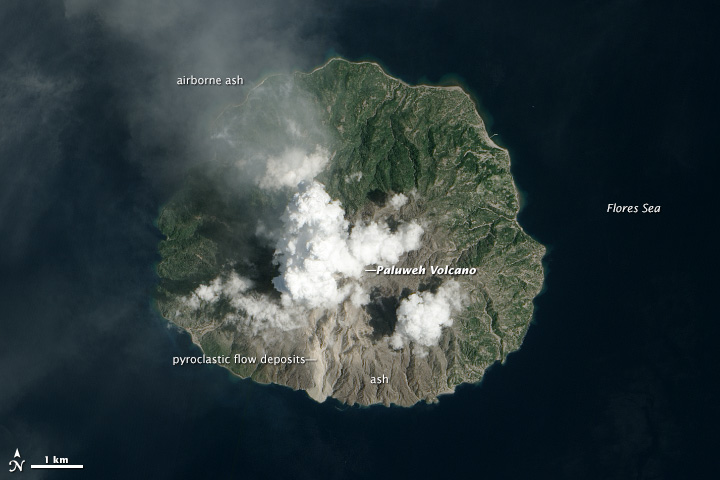New Millennium Program on:
[Wikipedia]
[Google]
[Amazon]
New Millennium Program (NMP) was a

New Millennium Program site
at
NASA
The National Aeronautics and Space Administration (NASA ) is an independent agencies of the United States government, independent agency of the federal government of the United States, US federal government responsible for the United States ...
project with focus on engineering validation of new technologies for space applications. Funding for the program was eliminated from the FY2009 budget by the 110th United States Congress
The 110th United States Congress was a List of United States Congresses, meeting of the United States Congress, legislative branch of the Federal government of the United States, United States federal government, between January 3, 2007, and J ...
, effectively leading to its cancellation.
The spacecraft in the New Millennium Program were originally named "Deep Space" (for missions demonstrating technology for planetary missions) and "Earth Observing" (for missions demonstrating technology for Earth orbiting missions). With a refocussing of the program in 2000, the Deep Space series was renamed "Space Technology".
NMP missions

Missions flown
*Deep Space 1
''Deep Space 1'' (DS1) was a NASA technology demonstration spacecraft which flew by an asteroid and a comet. It was part of the New Millennium Program, dedicated to testing advanced technologies.
Launched on 24 October 1998, the ''Deep Space ...
– standalone spacecraft testing solar electric propulsion, autonomous operation etc.; successful mission 1998-2001 including comet and asteroid encounters
* Deep Space 2 – Mars surface penetrators flown with Mars Polar Lander
The Mars Polar Lander, also known as the Mars Surveyor '98 Lander, was a 290-kilogram uncrewed spacecraft lander launched by NASA on January 3, 1999, to study the soil and climate of Planum Australe, a region near the south pole on Mars. It fo ...
in 1999; (failed)
* Earth Observing 1 (EO-1) – (launched 2000)
*Space Technology 5
Space Technology 5 (ST5) of the NASA New Millennium program was a test of ten new technologies aboard a group of Microsatellite (spaceflight), microsatellites. Developed by NASA Goddard Space Flight Center, the three individual small spacecraft w ...
– a cluster of three satellites investigating the Earth's magnetosphere
In astronomy and planetary science, a magnetosphere is a region of space surrounding an astronomical object in which charged particles are affected by that object's magnetic field. It is created by a celestial body with an active interior Dynamo ...
(launched 2006)
* Space Technology 6 – Autonomous Sciencecraft Experiment (autonomy) aboard Earth Observing 1 (see above); Inertial Stellar Compass (navigation) (launched)
* Space Technology 7 – disturbance reduction technology to support gravitational wave
Gravitational waves are oscillations of the gravitational field that Wave propagation, travel through space at the speed of light; they are generated by the relative motion of gravity, gravitating masses. They were proposed by Oliver Heaviside i ...
observations; (transferred to Physics of the Cosmos). Launched on the European Space Agency
The European Space Agency (ESA) is a 23-member International organization, international organization devoted to space exploration. With its headquarters in Paris and a staff of around 2,547 people globally as of 2023, ESA was founded in 1975 ...
's LISA Pathfinder on 3 December 2015.
Cancelled missions
* Deep Space 3/ Space Technology 3 (StarLight
Starlight is the light emitted by stars. It typically refers to visible electromagnetic radiation from stars other than the Sun, observable from Earth at night, although a component of starlight is observable from Earth during daytime.
Sunlig ...
) – would have been a spaceborne stellar interferometer.
* Deep Space 4/ Space Technology 4 ( Champollion) – planned for launch in 2003 to orbit and land on comet Tempel 1 and return a sample in 2010 (cancelled 1999)
* Earth Observing 2 – a plan to use space-based lidar
Lidar (, also LIDAR, an acronym of "light detection and ranging" or "laser imaging, detection, and ranging") is a method for determining ranging, ranges by targeting an object or a surface with a laser and measuring the time for the reflected li ...
to measure atmospheric winds (cancelled 1998)
* Earth Observing 3 (GIFTS) – Geostationary
A geostationary orbit, also referred to as a geosynchronous equatorial orbit''Geostationary orbit'' and ''Geosynchronous (equatorial) orbit'' are used somewhat interchangeably in sources. (GEO), is a circular geosynchronous orbit in altitud ...
Imaging Fourier Transform Spectrometer originally planned for 2005-6 launch (cancelled)
* Space Technology 8 – originally planned for 2009 launch, the satellite is designed, developed and manufacture by Orbital Sciences Corporation
Orbital Sciences Corporation (commonly referred to as Orbital) was an American company specializing in the design, manufacture, and launch of small- and medium- class space and launch vehicle systems for commercial, military and other governmen ...
(cancelled)
* Space Technology 9 – a NASA proposal related to precision landing and hazard avoidance for future planetary lander vehicles.
References
External links
New Millennium Program site
at
Jet Propulsion Laboratory
The Jet Propulsion Laboratory (JPL) is a Federally funded research and development centers, federally funded research and development center (FFRDC) in La Cañada Flintridge, California, Crescenta Valley, United States. Founded in 1936 by Cali ...
{{Use American English, date=January 2014
NASA programs